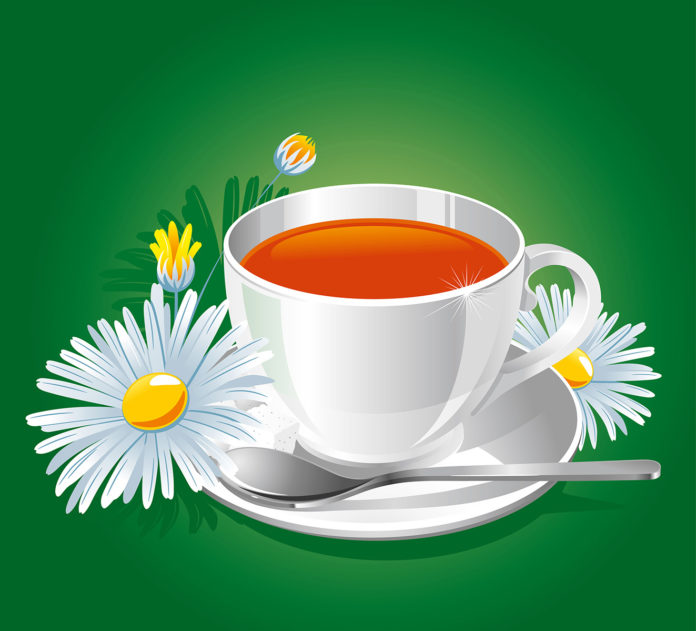
Soothing Teas for Kids
Medicinal teas are a natural alternative to medicine for many childhood ailments. Here’s how to tell what type of tea your child needs and learn how to prepare it
By Dr. Joyce Johnson BSc, ND
TEAS ARE A GREAT HERBAL ALTERNATIVE TO TAKING REGULAR MEDICATION and this is even true for children. Many times, children don’t enjoy taking pills because they have trouble swallowing them. There may be other medications that the child simply doesn’t like the taste of. Luckily, there are a variety of herbal teas that children can take to soothe a variety of ailments.
ECHINACEA
AILMENT: COMMON COLD
One of the first illnesses a child may face is the common cold. For the common cold, Echinacea is a common herb that has been used for centuries. For children, it’s easiest to combine the herb into a tea formula. Echinacea is a flower from the daisy family, and some varieties of Echinacea are used for medicinal reasons; the roots of the flower are what are used to make the tea.
TEA TIME
Dried Echinacea can be put into a cup, added to a pot of boiling water, and covered for 20 minutes (or prepared tea bags can be used). Lastly, the tea can be strained to remove the roots from the drink. If desired, the tea can be sweetened with a teaspoonful of sugar.
CHAMOMILE
AILMENT: INDIGESTION
Chamomile has many different uses including helping to ease digestion and stomach gas. Chamomile tea soothes the nervous system to calm children so it can be used with other ailments as well.
TEA TIME
Chamomile tea is made from the flowers; specifically, the tea can be made using two or three teaspoons of dried chamomile flowers per cup of hot water. The tea may then steep for up to three minutes, and can be strained through a strainer cup. Many people also like to add some fresh lemon juice or a teaspoon of honey for flavor.
FENNEL
AILMENT: INDIGESTION, GAS OR COLIC
TEA TIME
When making Fennel tea, the seeds are used rather than the roots of the flower of the Fennel plant. To make Fennel tea, one to two teaspoons of whole Fennel seeds can be gently crushed and added to two cups of boiling water. It’s important that the tea is not brewed for any longer than three minutes. After the tea is finished brewing it can then be strained into a cup and allowed to cool until it’s reached a pleasurable drinking temperature. If wanted, this tea may also be sweetened with honey, sugar or other sweeteners.
SLIPPERY ELM
AILMENT: SORE THROAT, INDIGESTION, CONSTIPATION OR DIARRHEA
MAKING TEA
The mucilage gel that is extracted from the underside of the Slippery Elm tree bark is what is used to make the tea with; however, the mucilage gel is obtained in a powder bark form. People may make the Slippery Elm tea by warming some water and adding up to two tablespoons of Slippery Elm bark powder to the water. Then, steep for three to five minutes. To provide a boost in taste, a spoonful of sugar or honey may be added to the tea.
AGRIMONY
AILMENT: DIARRHEA, MILD COUGHS OR SORE THROATS
Agrimony is also a great anti-inflammation drug, and it is a natural diuretic. Being a natural diuretic, Agrimony is able to help treat kidney or bladder diseases and disorders; this is due to the rich levels of antioxidants.
TEA TIME
Typically, the Agrimony tea is made using multiple parts of the plant including the flowers, stems, and roots. The Agrimony tea is made by placing one or two teaspoons of dried leaves and flowers into a cup of boiling water. The leaves and flowers should be allowed to steep for 10 to 15 minutes. Afterwards, it may be allowed to cool and sweetened with honey.
NETTLE
AILMENT: ALLERGIES
For allergies and to help cleanse the blood and immune system in children, there is a natural herbal tea that will also help with this.
TEA TIME
The Nettle plant can commonly be found already manufactured as tea bags in many grocery store outlets. However, natural herbal Nettle tea can be made by using fresh Nettle leaves. Also referred to as the Stinging Nettle, these plants have a natural defense of stinging animals and humans by way of hollow stinging hairs known as trichomes. The trichomes inject histamine into animals and humans upon contact causing allergic reaction. Sometimes the itching pain has been reported to last for hours so it’s also vital to wear gloves when someone is harvesting their own Nettle leaves. When harvesting the Nettle leaves, the top two bracts of leaves are clipped to be used for the tea.
Once the Nettle leaves have been harvested, they can be put into a pot of boiling water for 10 to 15 minutes. Afterwards, the water can be strained to catch the Nettle leaves and then throw them away. Many people sweeten Nettle tea with a teaspoon of honey for taste.
LEMON BALM
AILMENT: PROBLEMS FALLING ASLEEP
For helping children to relax at night for sleep, or any other time when they need relaxing, consider Lemon Balm tea. Lemon Balm tea can also be used to help relieve anxiety and stress in children through their day, or when needed.
TEA TIME
This tea is made by boiling up to one teaspoon of dried lemon balm herb in a cup of boiling water on the stove; the lemon balm should be covered and allowed to simmer for up to 10 minutes. Brewing the tea this way is important to trap the valuable antioxidants and medicinal aspects of the Lemon Balm tea in the pot. After brewing, the Lemon Balm tea is then strained to remove the loose herb from the drink. The tea is relaxing and calming to drink as is or a with a teaspoon of honey. VM










